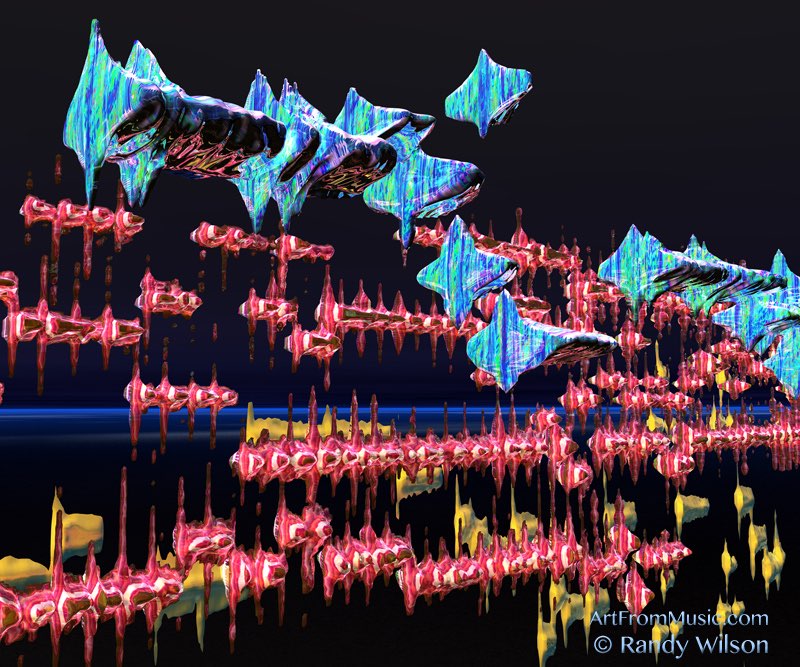Moonlight Flight
Moonlight Sonata 1st Movement
Ludwig van Beethoven





Moonlight Flight
Moonlight Sonata 1st Movement
Ludwig van Beethoven
Details of Passage Depicted
The different musical parts in this artwork are represented as vertical lattices. Higher pitched notes are positioned higher in this portrait. Three parts have been colored separately. The opening melody is blue. The arpeggio accompaniment is in red, and the bass notes in bronze. Earlier notes are on the left and later notes on the right. The three parts have been offset slightly to show more of the Bass and Arpeggio parts.
The beginning of each piano note has small wings that help show the attacks of repeated notes. All upper harmonics have been removed, leaving only the fundamentals we see as “the notes” in music notation.
The Moonlight Sonata is one of Beethoven’s most famous piano sonatas. The opening notes and melody of this first movement are familiar to millions. John Lennon was obsessed with the Moonlight and flipped a reel-to-reel tape of it over to play it backwards. This backwards version inspired the chords for the song “Because,” on the Abbey Road album.
Beethoven on Picturing Music while Composing
Many composers have spoken about the relationship of visuals, architecture, and color to their music. Beethoven made at least a couple of specific comments on this topic that were noted and published.
“I always have a picture in my mind when composing, and follow its lines.”
(In 1815, talking about the "Pastoral" symphony.)
“I change many things, discard, and try again until I am satisfied. Then, however, there begins in my head the development in every direction, and, in as much as I know exactly what I want, the fundamental idea never deserts me,—it arises before me, grows,—I see and hear the picture in all its extent and dimensions stand before my mind like a cast, and there remains for me nothing but the labor of writing it down, which is quickly accomplished when I have the time...”
(1822)
